Conclusion
Since 1986, the official end of uranium mining, grassroots organizations like Diné CARE (Citizens Against Ruining Our Environment) have emerged to hold the government accountable. While the government neglected its responsibility to the Diné, the Diné upheld their personal and cultural responsibilities by protesting, testifying before Congress, and suing mining companies.
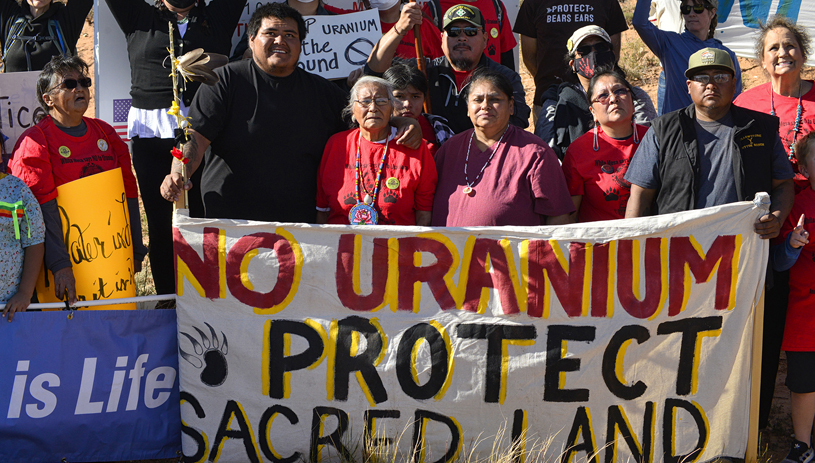
Ute elder Thelma Whiskers, her daughter, Yolanda Badback, Ute Tribal Councilman Conrad Jacket, and community members and leaders protest in front of the mill turnoff, October 22, 2022, Tim Peterson
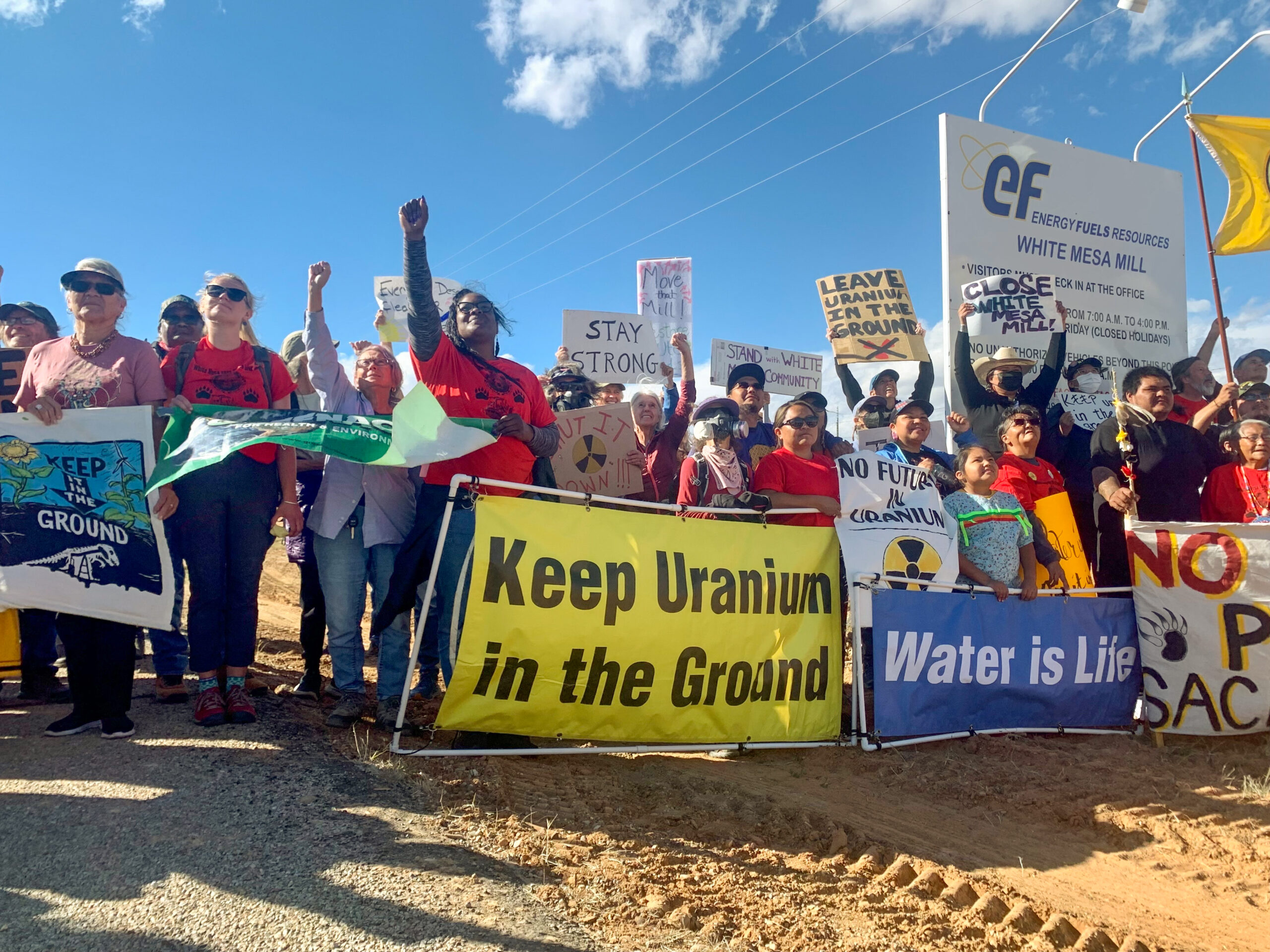
More than 100 people participating in a peace march to the Mesa Mill, which sits about 5 miles from the tiny community of White Mesa, Utah, October 22, 2022, Stina Sieg
Navajo Nation President Buu Nygren's message for KJZZ's Uranium and the Grand Canyon conversation, June 26, 2024, NPR
The government’s response has been minimal: the Federal Five-Year Cleanup Plan in 2011 to prioritize mine cleanups, $1.7 billion in 2014 for uranium mine remediation, and medical and financial compensation from the Radiation Exposure Compensation Act. Of 524 abandoned uranium mines, only 219 have designated funding for remediation, resulting in uranium still contaminating 85% of Diné homes.
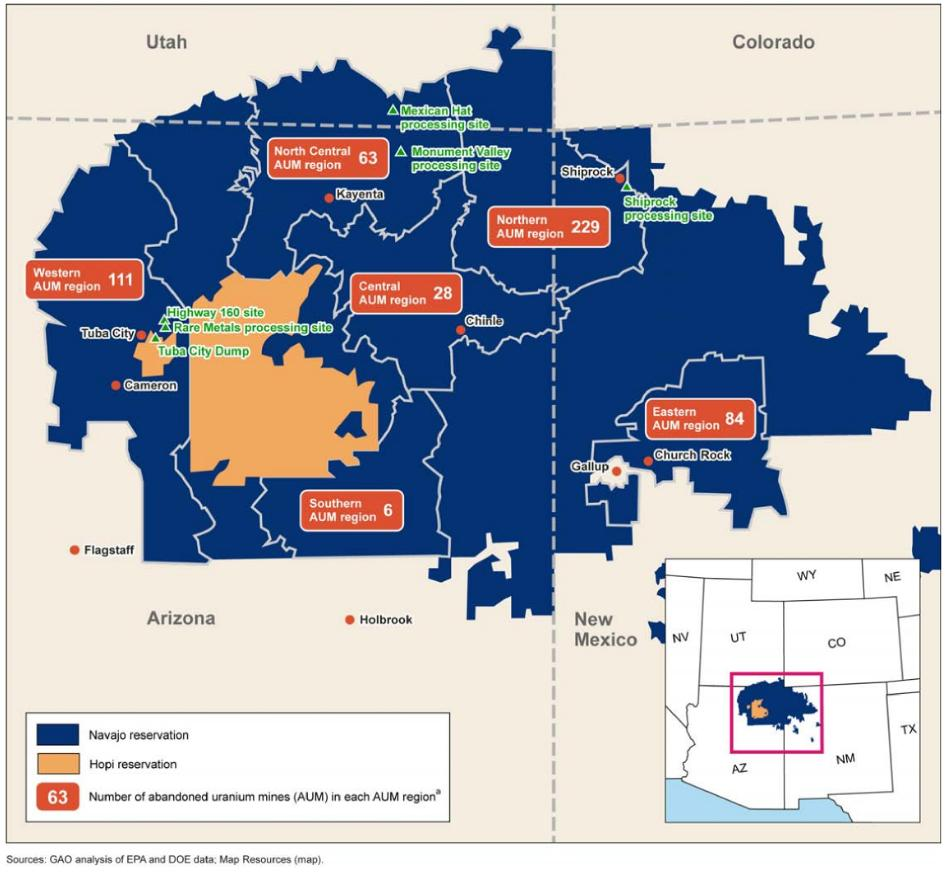
Map of the Navajo and Hopi Reservations with 521 Abandoned Uranium Mines, Four Former Uranium Processing Sites, and Other Key Sites, May 2014, Government Accountability Office
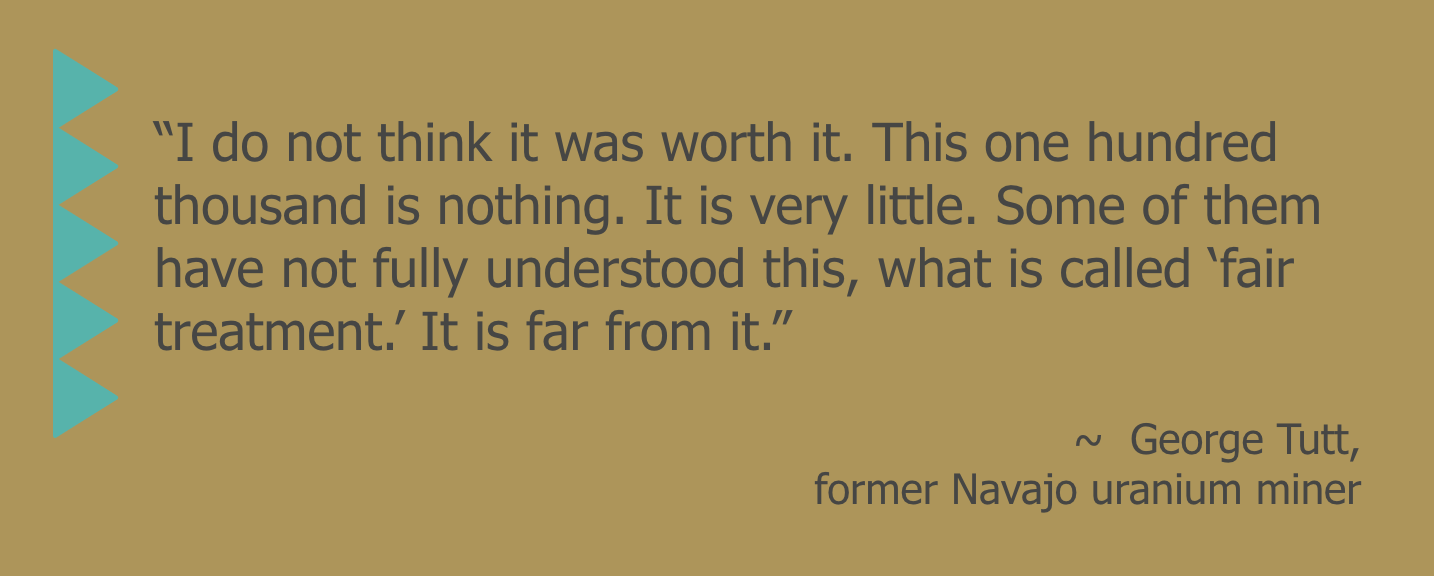

Beyond legal battles, the Diné have preserved their culture through language revitalization and traditional practices despite decades of suppression. By reclaiming their identity and preserving their culture, the Diné have transformed their struggle into a testament of resilience.
Personal interview with Beverly Nez, a Navajo woman in Chandler, Arizona. Interview conducted 11 Mar. 2025.
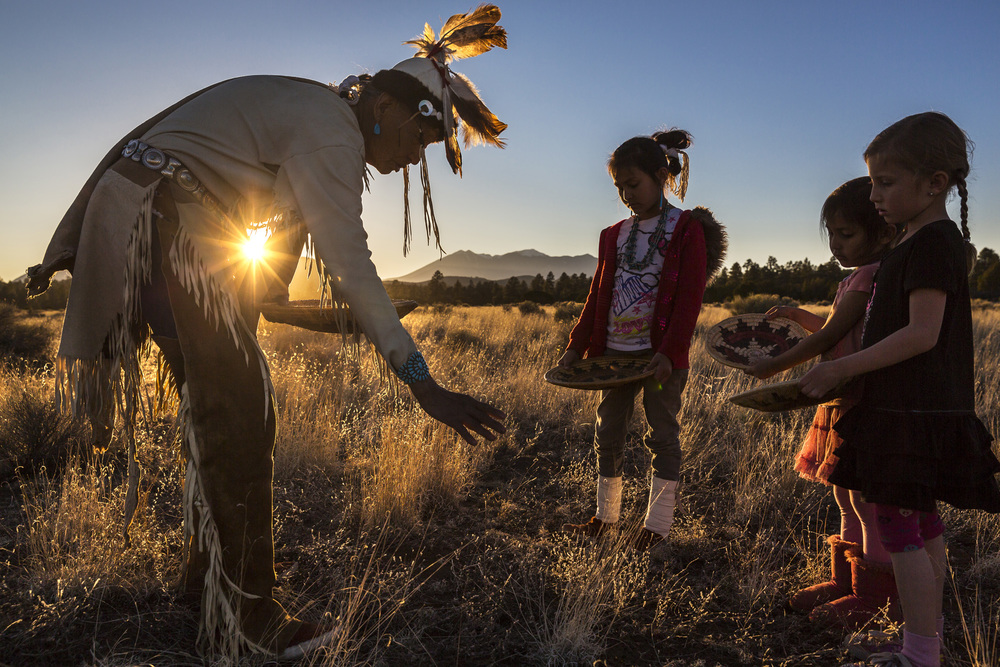
Jones Benalli, seen with ceremonial bowls teaching his grand-daughters the secrets of traditional Navajo medicine, April 2014, Brent Stirton
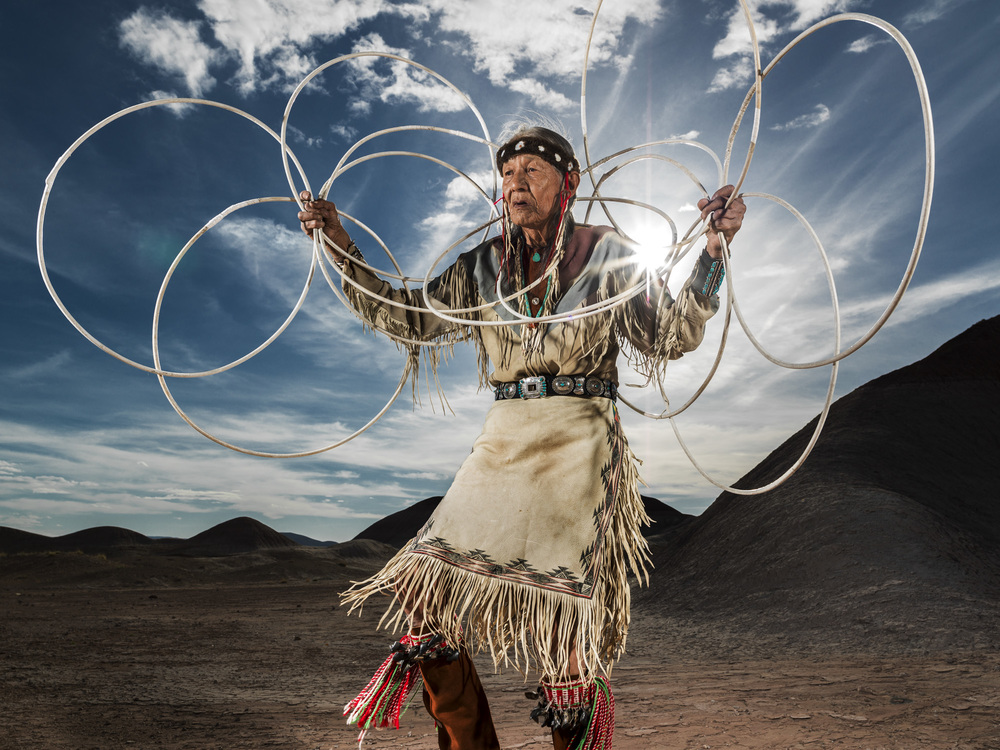
Jones Benally dancing the Navajo Hoop dance in a small canyon in the badlands of Cameron, Arizona, April 2014, Brent Stirton
Yet, exploitation continues. In 2024, Energy Fuels reopened a uranium mine at Pinyon Plain, located near the Grand Canyon in Arizona, claiming a need for sustainable energy. Diné activists and spiritual leaders resisted, asserting their sovereign right to self-determination.

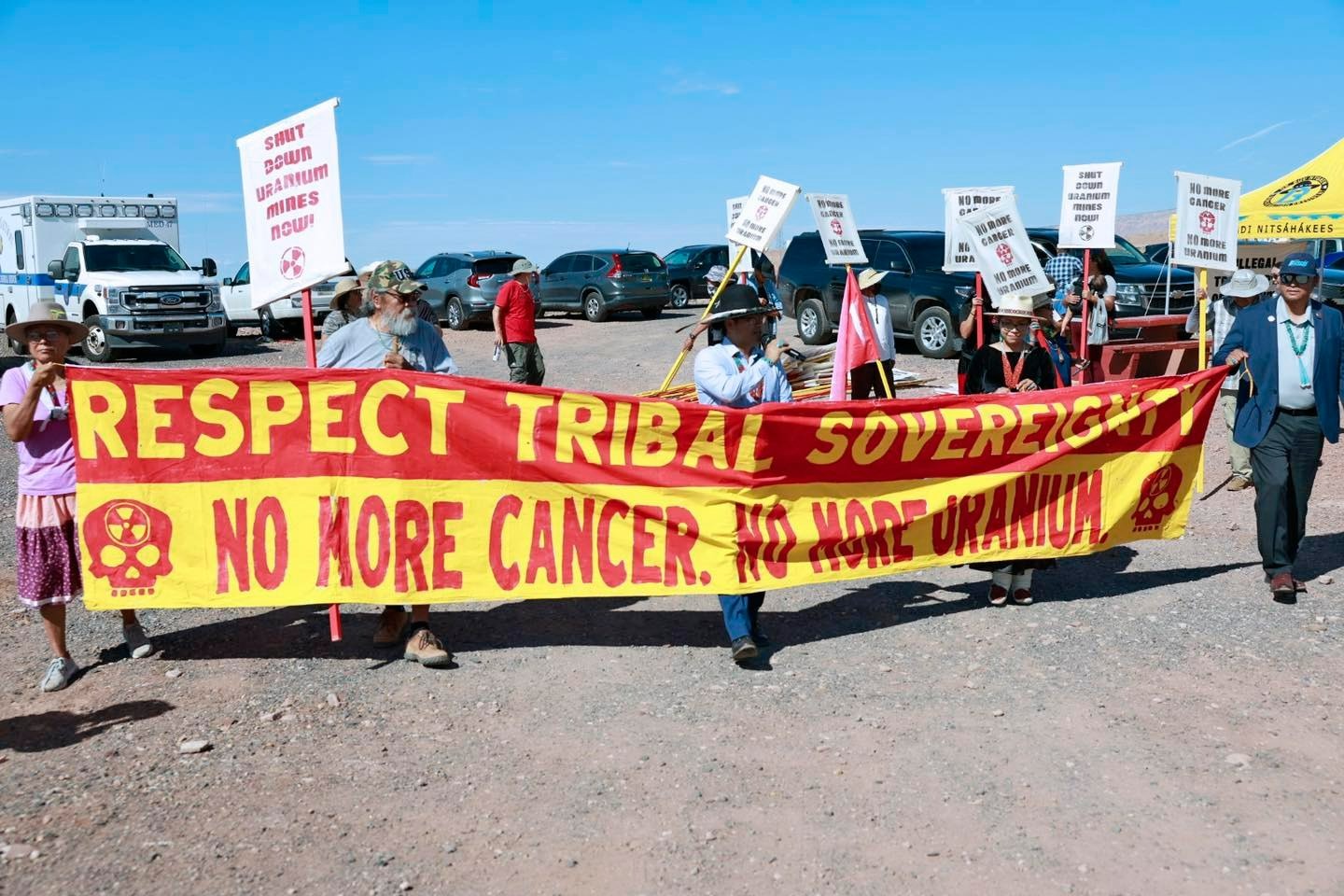
Navajo Nation President Buu Nygren marching with protestors in Cameron, Arizona, to oppose the transportation of uranium across Navajo land, August 2, 2024, Navajo Nation Office of the President
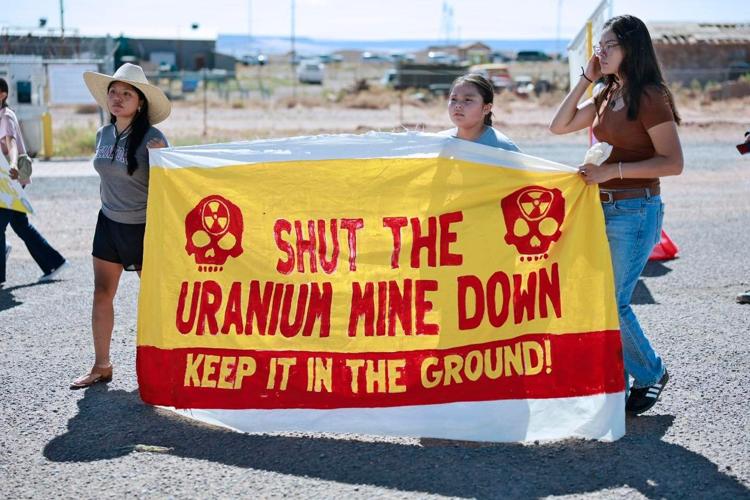
Cameron community members protest the transportation of uranium on Navajo lands, July 31, 2024, Office of the President and Vice President
This story—how the U.S. government overstepped its moral and legal responsibilities to the Diné and infringed upon their health, environmental, and cultural rights—has left deep scars on the Diné. Today, they continue to fight in pursuit of justice and preservation of Diné culture. May this story serve as a haunting reminder of the destruction wrought by placing profit over people and the enduring spirit of the Diné in defending their rights and honoring their responsibility to future generations.